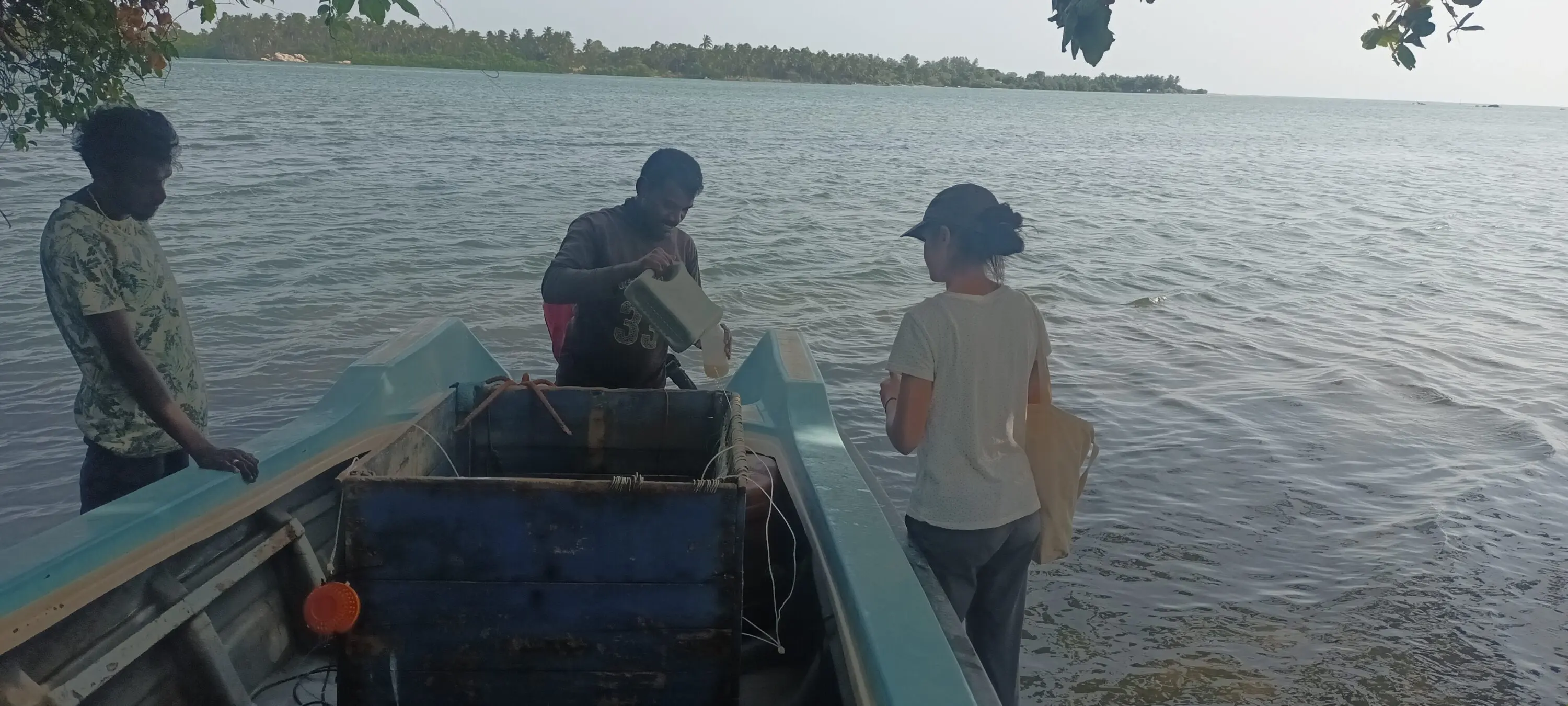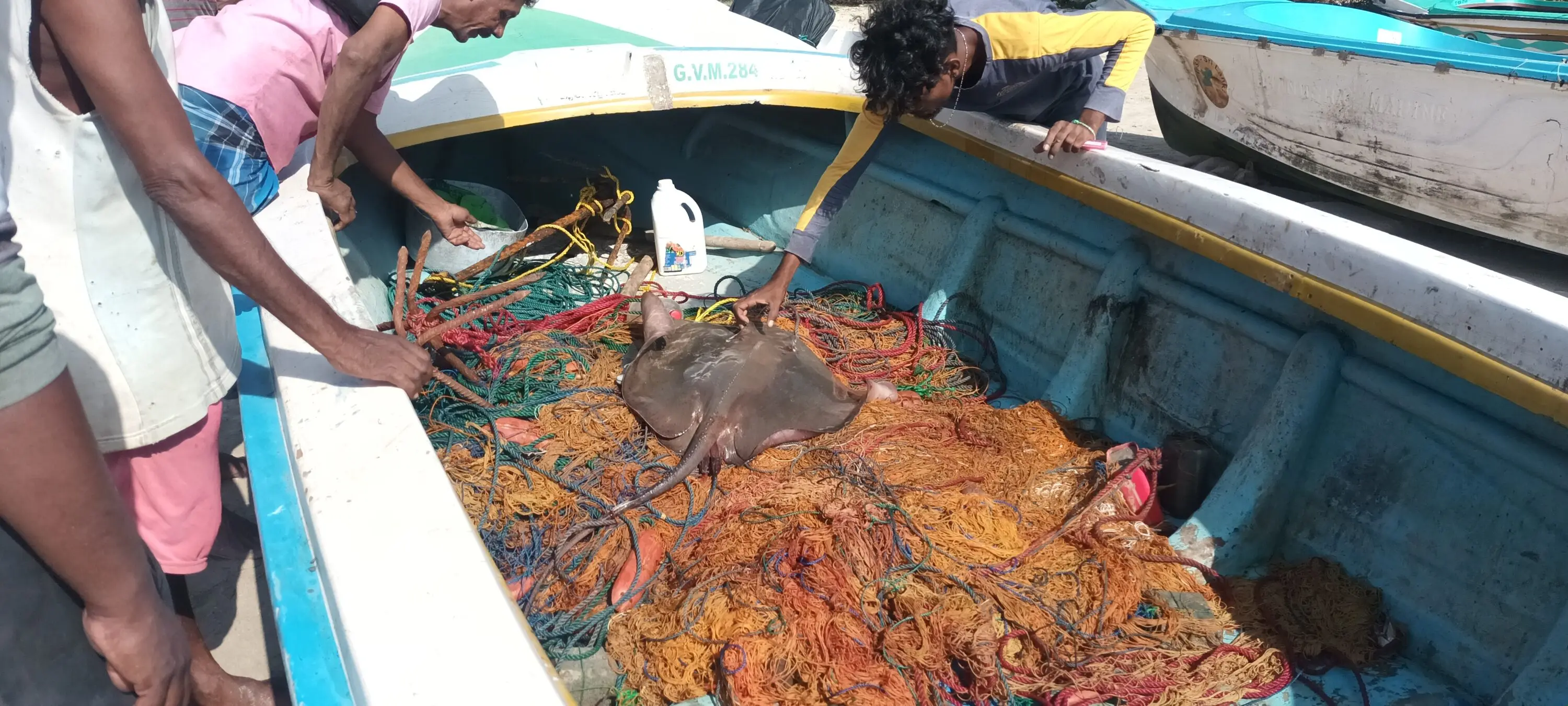Shifting fisheries and shifting strategies
I first visited Valaichchenai on Sri Lanka’s East Coast for a week at the start of the year. The town has one fisheries harbour, nested in the Valaichchenai lagoon, mainly used by multiday boats. You can also find smaller motorised single-day boats and traditional “oruwa” catamarans using small stretches of beach as informal landing sites scattered across the lagoon and coast.
For my research, which explores how environmental DNA (eDNA) from fisheries wastewater can reveal their catch composition, I scoped both the harbour and a nearby landing site called Peththalai.
During my first visit to Peththalai, fishers were regularly landing the endemic and endangered stripenose guitarfish and several species of sting rays. Meanwhile, landings at the harbour were scarce. When I returned six months later, the monsoon had changed and I witnessed about 20 manta and mobula rays in a single day at the harbour. However, Peththalai’s single-day boats were bringing in very little and often not fishing at all, regardless of it being the fishing season.
The contrast between landing sites became even clearer once I began working closely with fishers. At Peththalai, the small scale of operations allowed us to run an experiment. We sterilised two boats to test whether DNA shed from the 1st day of catch will carry over to the next trips. The first boat owner, Sivva, was enthusiastic and initially the only longline fisher at the site. But as catches dropped, he switched to bottom-set gillnets, before giving up fishing altogether to sell vegetables from his home garden and occasionally going fishing in his oruwa.

Sivva gives a water sample from his boathold. A metaprobe, used to absorb water through rolled pieces of gauze within a perforated sphere, is attached to his longline. Photo © Maura Muralitharan | Blue Resources Trust
The second, Kannan, seemed uninterested but let us use his boat. The day we sterilised his boat was the only day I had seen him spring into action. Flipping his boat over, he asked us to spray our bleach solution so he could scrub away algae and barnacles. Afterwards, however, he fished only a handful of times. Normally, he would set his net in the evening and harvest it early the next morning. But without informing us, he began changing this routine, retrieving the net the same night and saving himself a second trip. These shifts made it difficult for us to keep track of his operations.
We eventually moved to another beach-landing site on the Passikuda coast. Here, the two boats we worked with, Savi and Nadesan, used very different methods. At first, Savi was fishing with hook and line, which required him to stay out at sea the entire time, continuously throwing in his line to catch fish one at a time. This was unlike the gillnets and longline, where the gear was set, left for hours, and then retrieved later. Because of poor catch rates, however, he soon switched to a specialised ‘ray net’ with an 18-inch mesh, which fishers at this site typically begin using around October. Meanwhile, Nadesan continued fishing with hook and line, spending morning till noon out at sea.

Cownose ray caught using a gillnet targeting bottom-dwelling rays © Nimna Wickramasingha
What struck me most across these sites was the fluidity of operations. Fishers switched gears, changed routines, or abandoned fishing altogether depending on the season, profitability, or weather conditions. For researchers, this system seems complex, but for fishers, it is simply a way of life, making decisions day by day on what method, gear, or even livelihood will serve them best.
